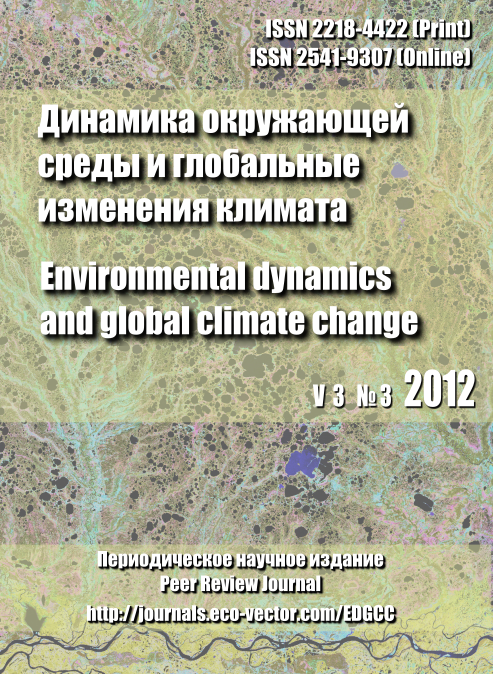Vol 3, No 3 (2012)
- Year: 2012
- Published: 15.12.2012
- Articles: 3
- URL: https://edgccjournal.org/EDGCC/issue/view/384
Articles
Simplification of ecosystem model on the basis of characteristic times analysis
Abstract
This work represents one lecture (from the course of lectures "Mathematical modeling of biological processes") adapted for article format. Main attention is paid to the simplification of soil carbon dynamics model. The application of the Tikhonov’s theorem (for reduction of the equations number) is shown for this model. Analytical solution of the simplified equations for this model is described in details. The comparison of the numerical solution of full model and the reduced model is given. The McKendrick-Pai’s model and Verhulst-Pearl's logistic equation are given (and are investigated analytically). Estimations of the operation number for some typical problems of biological kinetics and mathematical ecology are provided. The estimations showed a sufficient usefulness of simplifications even under the conditions of rapid development of computer technology presently.
Environmental Dynamics and Global Climate Change. 2012;3(3):3-30
 3-30
3-30


Sensitivity analysis of the model
Abstract
The study represents the lecture of the «Mathematical modelling of biological processes» course adapted to the journal paper format. We analyse techniques of estimating the model sensitivity to variations in parameter values. We discuss quantitative characteristics of the model sensitivity used by different authors. Mostly, we examine local sensitivity analysis, but in the final section of the paper the conception of the global sensitivity analysis was considered, too. In addition to theoretical speculations, we closely scrutinize the particular case of microbial growth kinetic analysis. It is shown that sensitivity analysis permits, firstly, to plan the most effective parameter estimation experiments and, secondly, to substantially simplify the model, if possible.
Environmental Dynamics and Global Climate Change. 2012;3(3):31-53
 31-53
31-53


Mechanism of methane bubble transport from peat layer
Abstract
Ebullition is an important mechanism of biogenic methane liberation from the peat into the atmosphere. However, at the present time we have a lack of information about formation and movement of the gas bubbles within the surface peat layer (< 1 m depth). As a result, some Russian scientists raise a question about the existence of the ebullition phenomenon at all, despite the multiple field observations. They suggest that the gas transport through the dense peat is physically impossible. In this paper, we substantiate following mechanism of methane bubble transport: under the positive pressure the channel in the peat is formed and serves as a track for methane bubbles into the atmosphere. To model the physical process of the bubble formation and movement we fill the transparent vessel by mesotrophic peat which was recently sampled from Bakchar Bog, Tomsk region. A bent tube was sticked into the central part of peat layer. The syringe with the air was connected to the upper end of the tube putting a pressure on the peat. As a result, we observed a gas discharge which visually confirm theoretical possibility of the process. It was calculated that the bubble of 1.3·10 -3 m in radius emitting from 3 cm depth has ability to do work of (7.6 ± 4.4) · 10 -5 J. Meanwhile, the work to track the channel in the peat (i.e. to do work against elastic forces of moss stems) was theoretically estimated at (3.44 ± 1.03)·10 -5 J (peat compressibility was estimated using results of the «compressive» experiment.). Thus, experimentally based calculations confirm the ebullition phenomenon existence. In the addition, we suggested that the first bubble track the way through the peat facilitating the transport of the rest bubbles through its mass. It was shown on the literature data that required for ebullition positive pressure can be produced by methanogenic archaebacteria and do not influence on its activity. The mechanism of the bubble transport from the several decimeters depth may be similar. In this case, large volume of methane is accumulated in the peat, emitting by considerable gas release events when during short time periods (several hours or even minutes) the flux reaches 40 gCH 4/m 2.
Environmental Dynamics and Global Climate Change. 2012;3(3):54-63
 54-63
54-63











